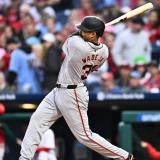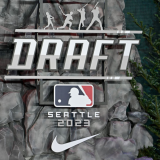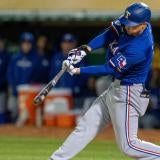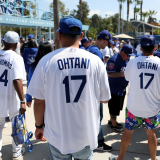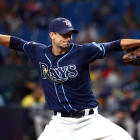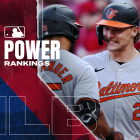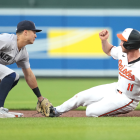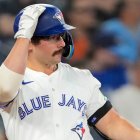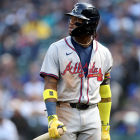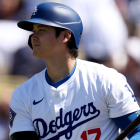With the spread of the novel coronavirus delaying the start of Major League Baseball's 2020, we have plenty of time to ponder life's big questions. Rather than do that, we've decided to use this interim period to rank things -- like, say, the best pitches in baseball. Over the next week, we'll be highlighting pitchers who offer quality renditions of five different pitch types: four-seam fastballs, sinkers, sliders, curveballs, and changeups. That process continues today, with curveballs.
Here's how this will work. In each article, we'll touch on five pitchers: the three best; a "best-kept secret," whose offering is underappreciated for some reason; and a "who's next?" or a pitch that belongs to a prospect but could someday top the field.
A fair and valid question to ask is: well, how did we come up with these rankings? The simple answer is that we used a combination of analytics and observations. The more complex answer -- and the one tailored specifically for curveballs -- is that we prioritized a couple of attributes, including the pitch's depth. We also required that the pitch was usable -- that means the pitcher could locate their offerings well enough for its innate characteristics to matter.
It should be clear by now that these rankings are objective by nature. We're not pretending these are gospel handed down from above, and we're fine if people want to swap in other pitchers as they see fit. There are more than three good practitioners of any given pitch, folks.
With all that legal mumbo jumbo out of the way, let's rank some freaking curves.
The three best
1. Charlie Morton, Tampa Bay Rays
Morton's claim to being No. 1 is straightforward. Despite throwing the second most curves in baseball last season, he had the third best True Average among pitchers who had at least 100 at-bats end with the pitch, all per Baseball Prospectus. (The two pitchers ahead of him had 309 at-bats end with their deuce; Morton had 311 end that way.)
Morton's first season with the Rays saw him use his curve as his primary pitch for the first time in his career. The old rule of thumb is that batters will tell you when something is (or isn't) working; based on that, his approach worked just fine. Morton held opponents to a .151 average and a .228 slugging against his curve, and generated whiffs on 38 percent of swings against it.
To recap: Morton used his curve a ton and posted excellent results with it. What's missing? Ah, right. The eye test.
Here, watch Morton spin some curves against the Yankees' fearsome sluggers:
That'll play.
2. Sonny Gray, Cincinnati Reds
We were all but destined to have a Reds pitcher on this list -- be it Trevor Bauer, Lucas Sims, or, yes, Gray.
Gray checks all the boxes: he threw his curveball a quarter of the time, according to Statcast; he limited opponents to a .131 average; he missed bats on more than 30 percent of the swings taken against it; he had an elite spin rate; and so on and so forth. At some point, you just have to give a pitch its due, you know? So, here's the due for Gray's curve:
3. Tyler Glasnow, Tampa Bay Rays
As is customary, allow us to tip our proverbial caps to some of those who were in contention -- that means you Aaron Nola, Noah Syndergaard, Ryan Pressly, and others. Kudos.
Glasnow threw just 264 curveballs last season because of the time he missed due to injury. The pitch was highly effective, though, with the opposition hitting just .177 against it with a 44 percent whiff rate.
It doesn't hurt that Glasnow's curveball is a beauty to watch, either:
The best-kept secret
James Karinchak, Cleveland
We weighed whether we should give the nod to German Marquez, the Rockies' right-handed starter, or Karinchak, who, it could be argued, should qualify only for the next section. We opted for Karinchak because of the wow factor. As in, wow, look at this pitch:
Karinchak wasn't up for long last season, but he found a good measure of success all the same. He held opponents to a .154 average against and generated nearly 37 percent whiffs. If he can stay healthy and throw a few more strikes he's going to have a lengthy career as a high-leverage reliever. That curveball is a big reason why.
Who's next?
Deivi Garcia, New York Yankees
Garcia is on the smaller side, and that will continue to work against his chances of remaining in a rotation for the long haul. One thing Garcia has working in his favor, however, is his curveball. It's a nasty pitch -- to the extent that we feel comfortable calling it the best of its kind in the minors. Take a look for yourself by clicking here.







